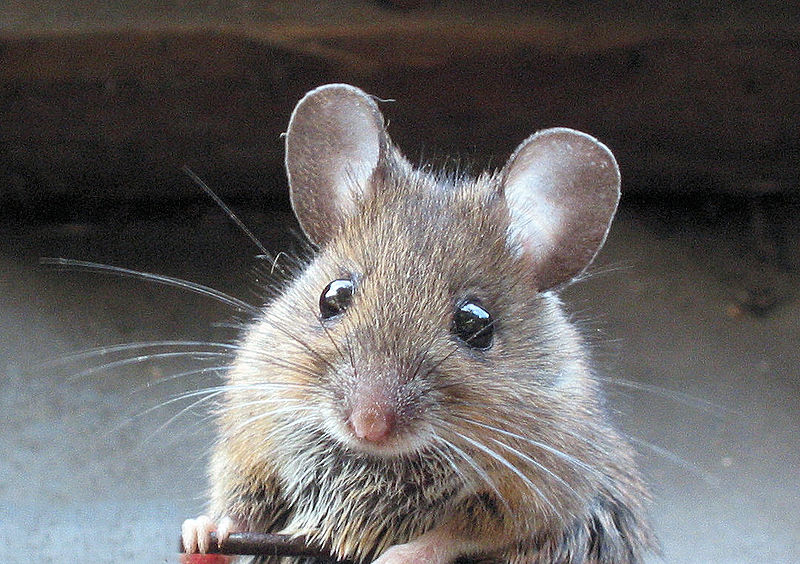Arlington County Public Health provides advice and assistance to residents and property owners on controlling rats and mice, including:
- Respond to service requests
- Provide education on reducing food sources and harborage
- Work with Code Enforcement as needed to assure compliance with the Arlington County Code (Chapter 10) related to rodent harborage and the Virginia Maintenance Code.
- Provide information about cleanup and extermination. Extermination on private property is the property owner's responsibility.
For more information, see our Rodent Control Brochure in English(PDF, 6MB) or Spanish(PDF, 5MB).
For help, or to report rodent harborage on the exterior of a commercial or residential property submit a request through Permit Arlington. You may also contact us at 703-228-7444 or EHVector@arlingtonva.us.

Rats and mice are rodents that are commonly found living near people. They can be very destructive to homes and can carry germs that make people sick. They often make their nests in and around people’s homes and office buildings.
The most common rodents in Arlington County are the Norway rat and the house mouse. Both are very good at jumping, climbing, swimming, gnawing and squeezing through very small spaces.
Common (Norway) Rat
(Rattus norvegicus, also called the brown rat or sewer rat)

Description
- Fur is coarse and mostly brown with scattered black on the upper surfaces. Their underside is typically grey to yellowish-white.
- Weight: about 11 ounces; Length: 13 to 18 inches including the 6 to 8½ inch tail
Lifespan and Reproduction
- Can live for up to 18 months, but most die before they are one year old.
- Litters of 6 to 12 young, which are born 21 to 23 days after mating; the average female has 4 to 6 litters per year.
- Reach reproductive maturity at about three months old.
- Breeding is most active in spring and fall.
Detection
- Can be detected by droppings or evidence of fresh gnawing.
- Will gnaw holes in sheds and walls, or squeeze through cracks and crevices in foundations, vents, etc. Rats can enter a building through any opening larger than ½ inch across (as small as a quarter!).
- Tracks can be seen in mud and on dusty surfaces.
- Runways and burrows may be found next to buildings, along fences, and under low vegetation and debris.
House Mouse
(Mus musculus)

Description
- Fur is mostly brown or gray. Their underside is typically white to beige.
- Weight: about 0.5 to 1 ounce; Length: 5 to 7 inches long including the 2.5 to 3.5 inch tail.
Lifespan and Reproduction
- Can live for 4-5 years, but in the wild 1 to 1.5 years is more common.
- Litters of 3 to 12 young (usually 5 to 6); females can have 5 to 10 litters per year.
- Reach reproductive maturity at 5- to 7-weeks-old!
- Breeding is year-round.
Detection
- Can be detected by droppings or evidence of fresh gnawing.
- Will gnaw holes in walls or squeeze through cracks and crevices in foundations, vents, etc. Mice can enter a building through any opening larger than 1/4 inch across (as small as a dime!).
- Usually make nests in stored materials indoors but can also live outside.
- Often become a problem in the fall when they enter homes to seek warmth.
- Tend to nest only 10 to 30 feet from their food supply.
Rats and mice have keen taste and smell.
- Trash and garbage in plastic bags
- Spilled or discarded food
- Kitchen scraps
- Soap
- Pet food
- Pet feces
- Flower bulbs and seeds
- Bird seed spilled on the ground
- Food from low-hanging feeders
To prevent rodents, you MUST remove their food, shelter, and entry points to your home or other buildings.
Eliminate Food Sources
- Contain trash and garbage in a rodent-proof container, such as a trash can with a tight-locking lid
- Clean trash cans and dumpsters regularly
- Prevent bird seed from falling to the ground
- Pick up and properly dispose of pet waste

Eliminate Harborage
- Remove piles of wood, furniture, and other yard debris
- Cut grass low to the ground, and trim plants, bushes, and branches away from the home or building
Eliminate Entry Points
- Seal holes larger than a dime, and cracks larger in diameter than a pencil
- Seal gaps around pipe and wire chases
- Add weather stripping to all doors, including garage doors
- Install tight fitting crawl space doors and vent covers
- Check periodically around your home and other buildings to correct problem areas
- Use strong and durable sealants:
- Steel wool
- Putty
- Copper stuffing
- Expandable foam
- Cement
Trapping (recommended indoors)
- Use snap traps positioned next to a wall
- Use peanut butter in snap traps to lure rodents
- Keep the trap in one place to give rodents a chance to get used to it being there
- Always follow manufacturer instructions!
Baiting
Baiting uses a food source mixed with poison. There are many types of baits. Some require repeated doses over several days before the rodent dies, while others kill the rodent after a single dose.
Rats tend to avoid new objects and foods. Mice are not suspicious of new objects, but tend to nibble and may not eat enough bait to get a lethal dose.
- Contain baits in tamper-proof containers, to help protect children, pets, and unintended wildlife
- Place baits in areas where rodents are already feeding
- Check the bait daily and replace it as needed
- Always follow manufacturer instructions!
Hire a Professional
You may choose to hire a licensed pest management professional, who can provide expertise in effectively and safely placing pesticides. This is recommended for eliminating large numbers of rodents.